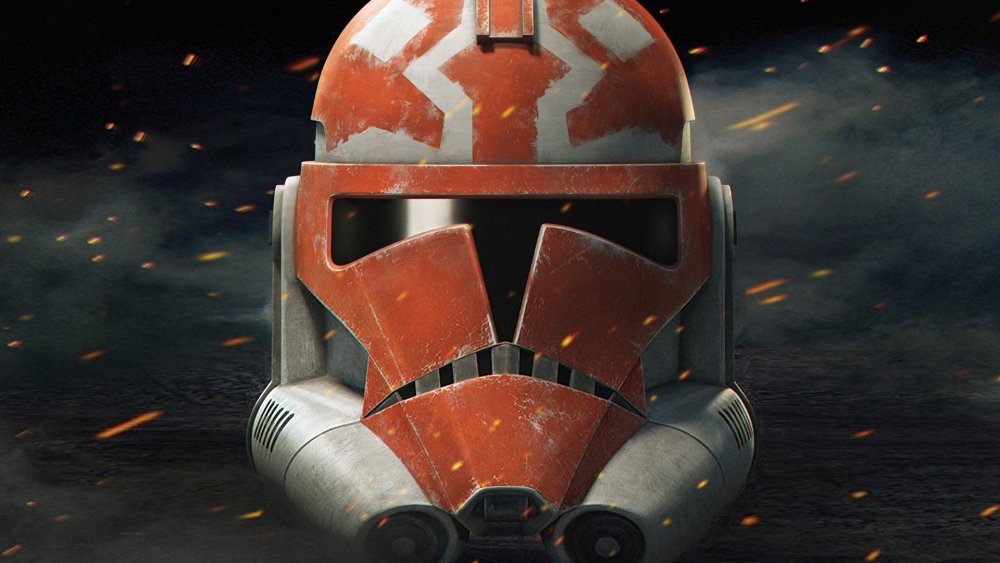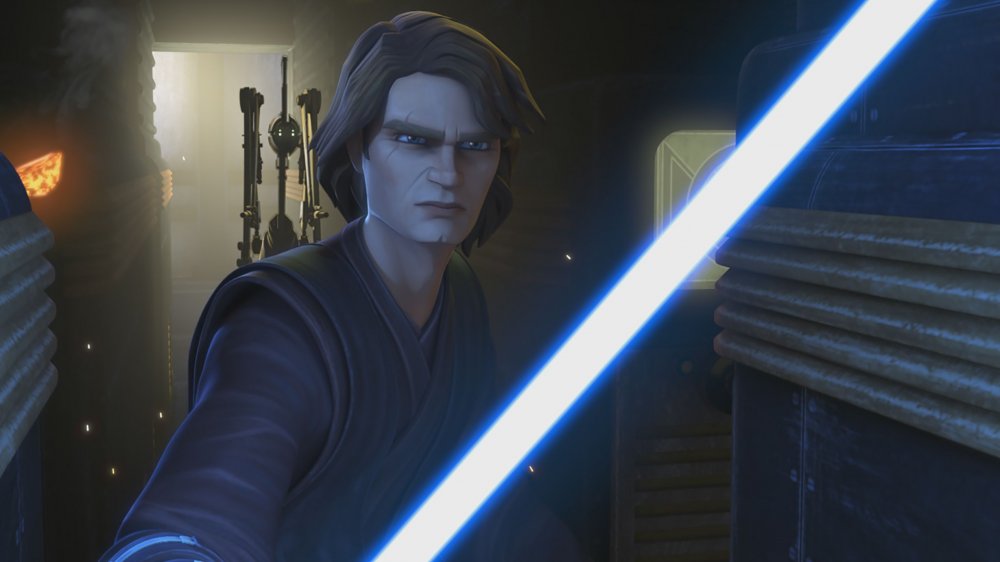How The Clone Wars Is Totally Unique In The Star Wars Universe - Exclusive
Star Wars: The Clone Wars isn't the first Star Wars animated series. That would be Star Wars: Droids, which debuted alongside its slightly less Star Wars-centric sibling, Ewoks, in 1985. It's not, as it was originally designed, the future of the Star Wars franchise, either. Since The Clone Wars' initial run ended, five movies, two animated TV shows, and one live-action series have debuted, with plenty of others on the way.
The Clone Wars isn't even the only place where you can find some prequel-era action. Since Disney took over Lucasfilm, there have been plenty of comic books and novels devoted to the era of The Phantom Menace and Revenge of the Sith. So, with all of that Star Wars out there, what makes The Clone Wars so unique?
It's the animation.
The Clone Wars is one of the most striking shows on television, Star Wars or otherwise, particularly in its latest incarnation, which has seen some major technical improvements. That's the whole point. Lucasfilm animation supervisor Keith Kellogg tells Looper in an exclusive interview that George Lucas' original goal for The Clone Wars was to make the best-looking animated series on television — a goal that persists to this day.
Even among other Star Wars cartoons, like Rebels and Resistance, The Clone Wars stands out. Kellogg explains why: "With Clone Wars, we really focus on the subtlety and the nuance of things a lot more. We try to really kind of dial in more of that realism and real acting-type feel more than what we did on both Rebels and Resistance."
If you tried to break down the various Star Wars shows on a scale of 100, with realistic movement on one end of the spectrum and cartoony motion on the other, Kellogg claims that The Clone Wars is about "70 to 30" in favor of realism. Its follow-up, Rebels, is an equal combination of both. Like The Clone Wars, it's based in reality, but "we pushed things a little more stylistically, pushed expressions and things a little more." And then there's Resistance, which is the inverse of The Clone Wars. "We really went cartoony and pushed things," Kellogg says.
Not that The Clone Wars could be mistaken for a live-action series, of course. "I don't want to say we want to be realistic, because we really don't," Kellogg says. "We want to still maintain the fact that it's a stylistic show." Still, given its subject matter, it's easy to see why George Lucas initially pushed for a more grounded approach to The Clone Wars' animation. At its heart, the series is a pulp-fantasy examination on the toll war takes on soldiers, leaders, civilians, and everyone in between. It's heady stuff, and it benefits greatly from Lucasfilm's subtle approach.
Star Wars: The Clone Wars looks unique, but it builds on what came before
The Clone Wars doesn't look like anything else in the Star Wars universe, but it does take a few cues from its source material. The show is set between the events of Attack of the Clones and Revenge of the Sith, and Lucasfilm's animation team went out of their way to capture the prequel's unique flair in the animated spin-off.
"One of the big things you'll notice — and you'll really notice it in the newer episodes — is the camera work and the lens choice," Kellogg explains. "They're much wider lenses, and it's much more sort of swoopy, moving cameras, which is what was done at the time of the prequels."
As Kellogg observes, the Star Wars prequels came out in the late '90s and early '00s, and were some of the very first films to really utilize computer-generated environments, which freed director George Lucas from traditional camera rigs. "On Rebels, for instance, we tried to maintain the feeling of cameras on sticks and only do camera moves that you could do at the time," he says.
Ultimately, Rebels mimicked the look of the original trilogy, which matches the timeframe when the show is set. Same goes for The Clone Wars. As Kellogg notes, "When the prequels came around, CG was really big, and we were starting to get the feeling for these camera moves that necessarily couldn't really be done 100 percent on just a crane."
Kellogg calls out the third-season Clone Wars episode "The Citadel" as an example of what he means. "We have a lot of what we call 'oner' shots, where it's a very long shot, 30 to 50 seconds, and the choreography takes place throughout that, trying to go from one part of a battle to another to link up another character," he shares. "Those, from an animation perspective, are incredibly difficult to try and get right, but our story team does a really amazing job of choreographing it out and figuring out where things are."
Once the era-appropriate camerawork is added, Kellogg and his team go in and bring the characters to life: "We try and flesh it out and really put the character and the expression and the subtleties into it once we get it into animation."
That combination of the grandiose and the deeply personal has worked well for The Clone Wars for over a decade, and why shouldn't it? When you think about it, there's really nothing more Star Wars than that.
The final episodes of Star Wars: The Clone Wars stream Fridays on Disney+.

